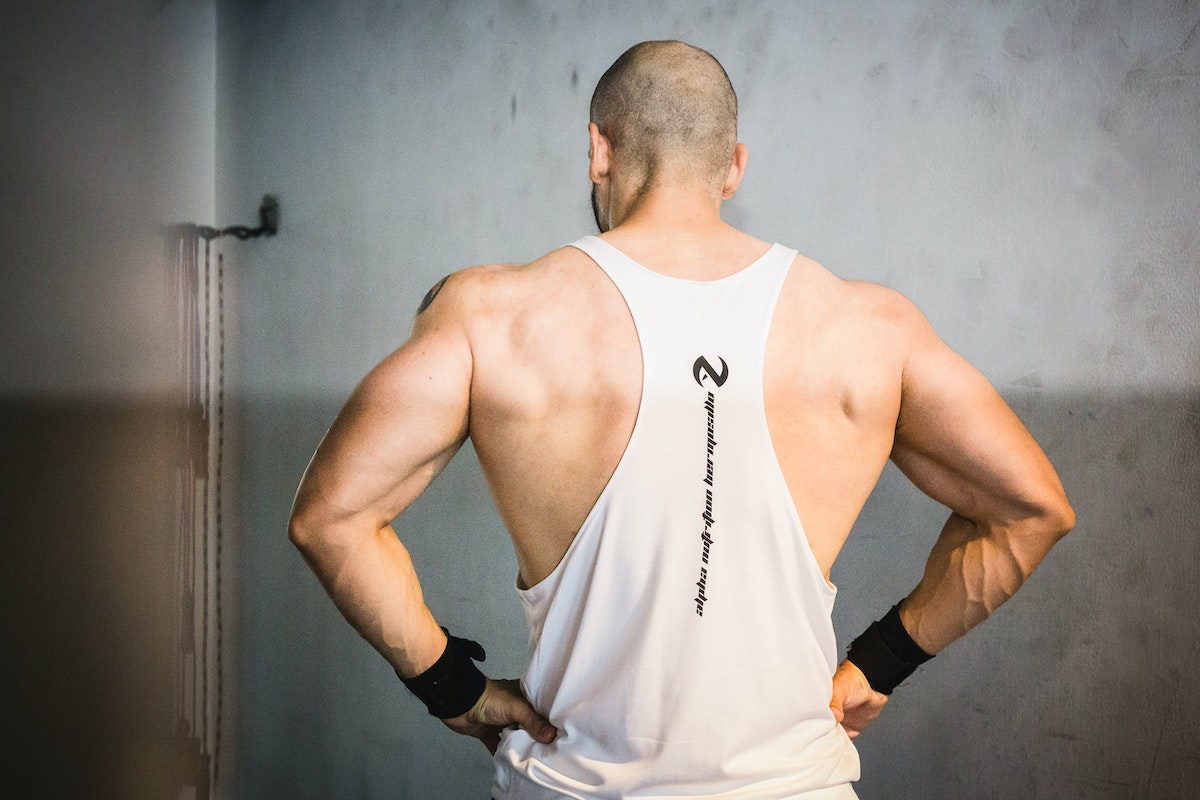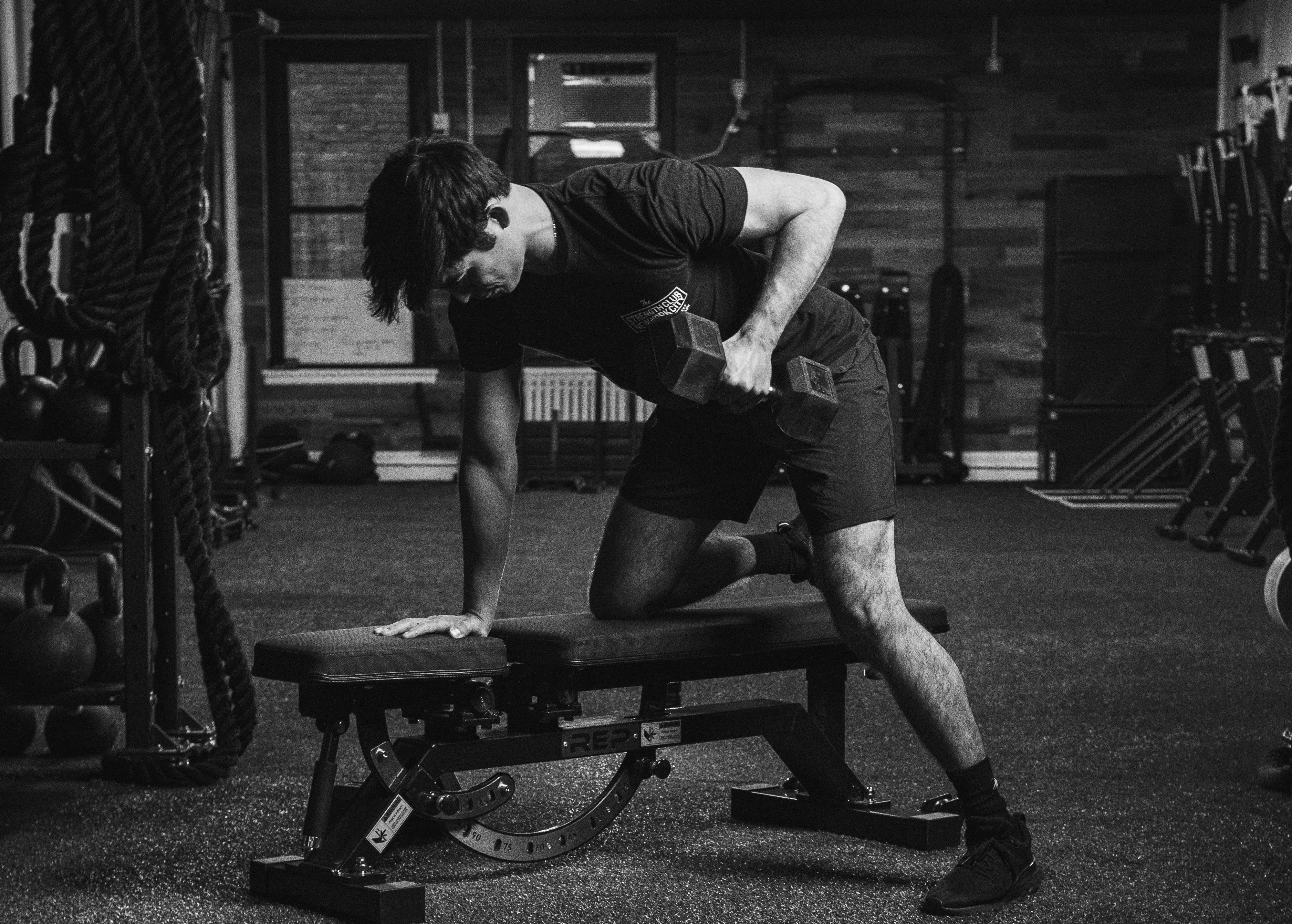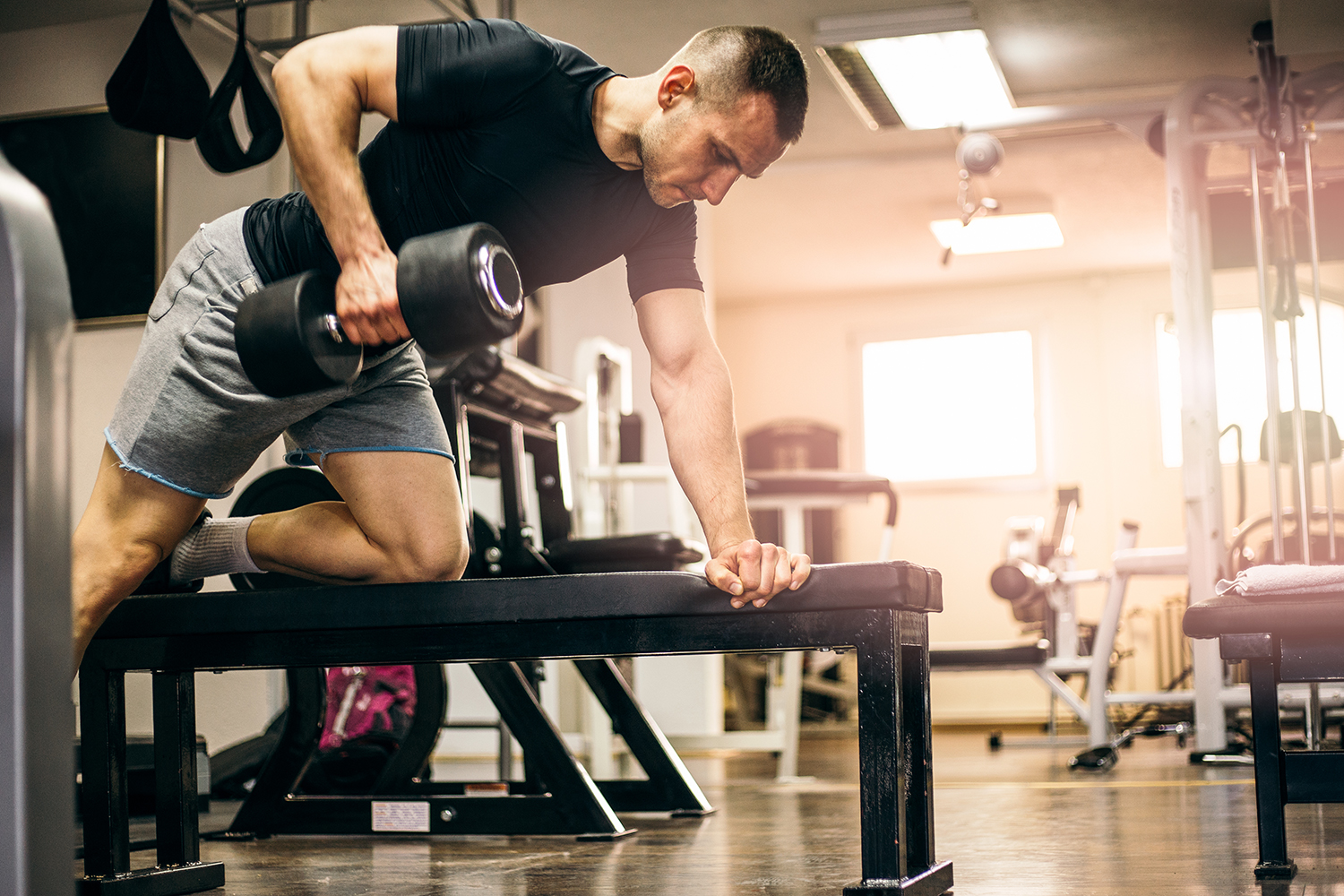Dumbbell rows should be on your upper body workout list when you want to see serious back-building results. It’s important you master your technique to see optimal muscle growth. Dumbbell rows increase your pulling power to offset the focus on pushing exercises like push-ups or the bench press. You’ll enhance your athletic performance and your ability to perform your simple everyday functional tasks, especially those involving pulling, like pulling open a door or pulling the bed covers on. This guide covers the benefits, the most common mistakes, tips, variations, how to improve your technique, and more so you can conquer the dumbbell row.
What is the dumbbell row?

The dumbbell row is a classic pulling exercise that hits the larger muscles of your back as well as your arms. You bend forward at your hip, holding a weight in one hand hanging toward the ground. You row or pull the weight upward toward your torso before lowering it back down to the starting position. You can perform this exercise with or without a bench.
What muscles does the dumbbell row work?

The dumbbell row is worthy of any upper body training routine because it hits your major back muscles. The dumbbell row mostly targets your:
- Back muscles, including your rhomboids, traps, and lats
- Rear deltoids in your shoulders
- Biceps in your upper arms
- Forearms
- Core muscles, like your obliques
What are the benefits of the dumbbell row?

The dumbbell row provides plenty of benefits, including:
- Bulking up your back muscles and enhancing your upper body power.
- Better range of motion.
- Working your core muscles, including your obliques.
- Minimal equipment is required. All you need is a dumbbell.
- Working each side independently with the one-arm dumbbell row variation helps you to work on muscular imbalances and develop more balanced strength.
- Balance out your pushing or pressing work if you perform a lot of pushing exercises like the bench press or overhead press.
How to do the dumbbell row

There are different variations of the dumbbell row, and you might need to try different ones to decide what feels best for you. You can perform the standing variation in a lunge position or bent forward with your feet about shoulder-distance apart. You can also kneel on a bench for support if you’d prefer. No matter the variation you choose, you’ll need to fully engage your lats and biceps to pull the weights up toward your torso.
How to do the one-arm dumbbell row:
- Start in a lunge position with your left foot forward and your right foot back.
- Hold the dumbbell in your right hand.
- Lift or pull the weight up to your chest, making sure your elbow is bent at a 90-degree angle.
- Try to engage your core throughout this movement.
- Lower the weight back down.
- Repeat until you complete the set.
Top tips to master your technique

Read on for top tips to master your technique so you can get the most out of this exercise:
- Engage your core.
- Squeeze your shoulder blades together to prevent rounding your upper back.
- Try to pull more with your back muscles rather than your biceps, as this is a back-focused move.
- Try to keep your elbows tucked in close to your body.
Common mistakes to avoid

The following are the most common mistakes to avoid when performing the dumbbell row:
- Not engaging your core.
- Not squeezing your shoulder blades.
- Rounding your back.
- Using an excessively heavy weight.
- Not performing the correct full range of motion.
- Rowing only with your arms rather than your back.
- Using momentum rather than control.
- Rotating your shoulders and torso.
- Flaring your elbows out to the sides.
If you’re recovering from an injury and you’re not sure if you should try the dumbbell row, it’s best to ask your healthcare provider, doctor, or physical therapist.
Variations

Here are the most common dumbbell row variations to try to mix it up a bit:
- The T-bar row
- Cable row, either one-handed or two-handed
- Barbell row
- Renegade row
- Reverse grip dumbbell row
How to include dumbbell rows in your training schedule

You can include the dumbbell row in your back and upper body training workouts. Try to shoot for three sets of 10 to 12 reps on each arm. If you’re a beginner, you’ll probably need to start with lighter weights and fewer sets and reps until you’re ready to advance.
Once you’re familiar with the movement, you can try heavier weights and shoot for three sets of only six to eight reps to ramp up the muscle-building. Try to make sure the weights are challenging but still allow you to maintain your form. You’ll see fitness buffs, weekend warriors, and newbies alike working on the dumbbell row. It’s a worthwhile exercise once you can improve your technique and start developing serious muscle.




